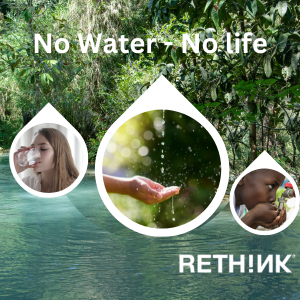
Did you know that about 97 per cent of all water on earth is saltwater found in the oceans? Of the rest, two per cent is bound in ice and glaciers. And only about 1 per cent is available to us humans and other life, freshwater animals and plants. This one per cent comes from rivers, lakes, and groundwater.
These numbers show that the concerns about the water shortage and quality are essential. Many people think that the earth is said to be blue, and the earth’s area consists of just over 70 per cent water. But only a small percentage is good enough to be used for drinking. Agriculture and large parts of the industry also depend on this freshwater.
Should this meagre percentage be spent on making a lot of clothes that will be discarded or not even used? Did you know that Swedes buy an average of 14 kilos of textiles per person every year? Of these, we throw about eight kilos straight down into the household rubbish. Together we throw away about 72,000 tons of clothes every year. In Sweden, we burn all these clothes. What a waste! Time to rethink.
COTTON DEVOURS WATER
Cotton is our most beloved choice of material in clothing and home furnishings and requires enormous amounts of water and chemicals. Growing the cotton plant involves a lot of water as the plant is thirsty and sensitive.
It takes up to 29,000 litres of water and more than 1 kg of chemicals to produce 1 kg of cotton. This kilo of cotton is enough for 5-6 t-shirts. To make one t-shirt, we need as many as 24 bathtubs filled with water, as up to 4,200 litres of water are needed to make only one t-shirt.
Check the label!
TIP! Next time you shop, check the label. What does it say about the sweater you are so eager to buy? What material is it made of?
SAY NO: Conventionally grown cotton and synthetic fibres like polyester and acrylic.
KINDER: Choose organic produced natural materials such as organic wool, organic linen, organic cotton, and organically grown regenerated fibre. With organically produced materials, we ensure the cultivation, but unfortunately, not the dyeing or other treatments that are often very environmentally burdensome.



